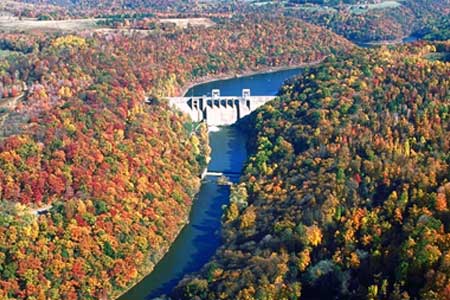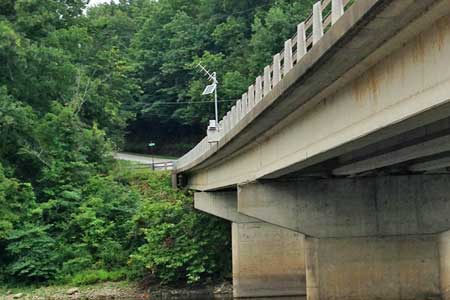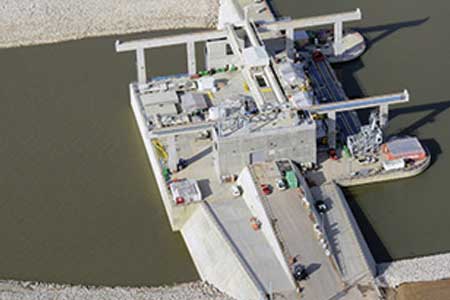Hydropower Plant Monitoring

Hydropower plants are important for energy generation, but their presence dramatically impacts the surrounding landscape both upstream and downstream of the dam. In addition, there are many factors which affect plant operation and maintenance. Comprehensive monitoring systems can be implemented at hydropower assets to both ensure minimal environmental impact and optimize operations.
Hydropower Facility Measurements

Typical Hydropower Plant Monitoring System
Typical NexSens hydropower monitoring systems incorporate a network of X3 environmental data loggers. These may be pole or wall-mount versions placed on dam structures, or buoy-mounted X3 loggers for direct measurement from within the reservoir from a platform such as the CB-450 data buoy.
Flexible wireless communications transmit data to the WQData LIVE web datacenter, which provides remote logger controls, alarms, and a suite of data management tools. Data can be fed to plant control systems from WQData LIVE via automated exports or data API. Alternatively, data can be delivered directly to plant SCADA systems by configuring an X3 unit as a Modbus master.
All X3 logger versions feature waterproof sensor connection ports for robust performance in harsh environmental conditions. A very wide range of sensor types are compatible and automatically detected by the logger.
On the upstream side of hydropower facilities, instruments like the Geolux flow sensor can track incoming flow rates feeding the reservoir. Background water quality can be monitored upstream or in reservoirs with instruments like the YSI EXO2s multi-parameter sonde.
Reservoir water levels can be tracked with pressure transducers, non-contact radar sensors, or a buoy-mounted SS510 sonar depth sensor. Buoys can also support T-Node FR temperature profiling strings and other water quality sensors like the Sequoia LISST-ABS acoustic sediment sensor.
Downstream TDG sensors like the Pro-Oceanus Solu-Blu TDG probe can monitor for supersaturation, while multi-parameter sondes can track general water quality. Tipping bucket rain gauges or multi-parameter weather stations can be established at any location to track precipitation and general atmospheric conditions.
Contact a NexSens Applications Engineer today to discuss your hydropower plant monitoring application.

Case Studies
Mahoning Creek Hydroelectric Plant
Originally constructed from 1938-1941 for flood control in the Allegheny River basin of Western Pennsylvania, the Mahoning Creek Dam was retrofitted for hydropower production seven decades later by Enduring Hydro. Monitoring at the plant includes TDG measurements to detect potential supersaturation that could harm fish in the waters downstream from the dam.
Read MoreTracking Flow For Hydropower
The Northern Indiana Public Service Company (NIPSCO) is a large energy provider in the state of Indiana servicing more than a million customers. Maintaining network reliability depends in part on monitoring flow rates near its hydropower assets. To achieve this, several flow monitoring stations have been installed from bridges on the Tippecanoe River and Wabash River.
Read MoreCannelton Dam Hydroelectric Project
At four different sites along the Ohio River, American Municipal Power (AMP) has retrofit existing locks and dams to generate environmentally friendly hydropower. The first to get underway was at Cannelton Dam located near Cannelton, Indiana. NexSens monitoring stations track DO and temperature both upstream and downstream of the new hydropower facility.
Read More






